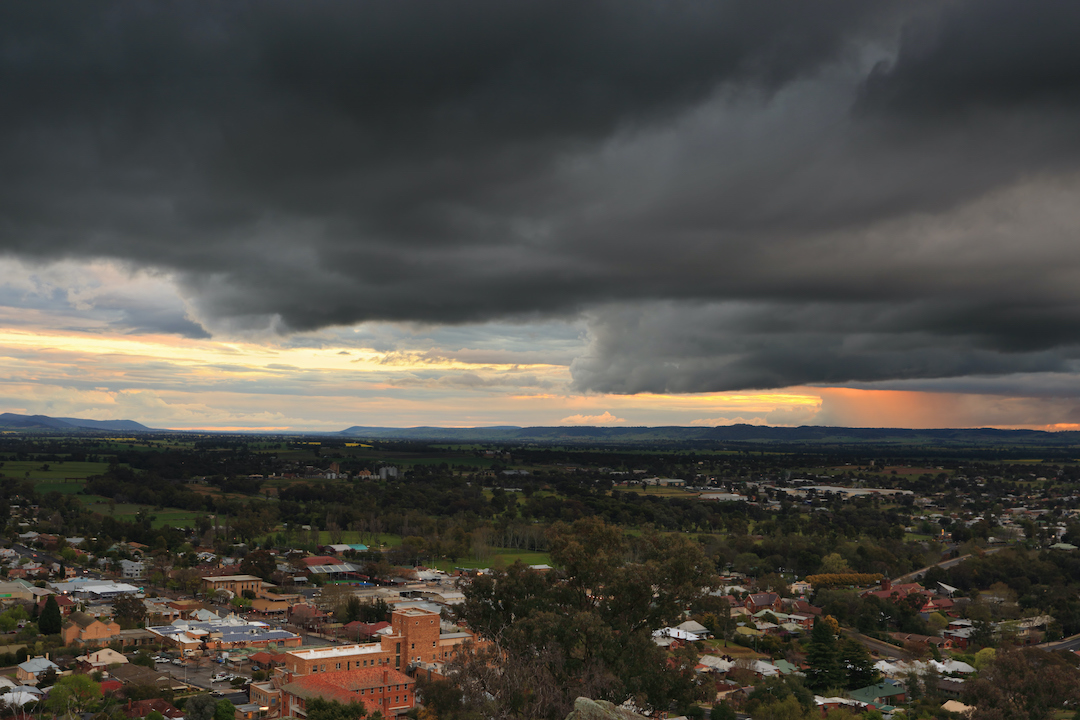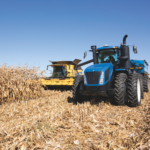Farmers can get more out of their equipment than ever before, with market-leading Precision Land…
AI is forecast to take over weather technology

Artificial Intelligence (AI) is causing a big seasonal change in the world of weather forecasting. Machine learning-based systems can now make accurate 10-day forecasts in minutes and could soon play a role in the all-important predictions of El Ni�o�and La Ni�a.
Artificial Intelligence may not have the ability to predict what many farmers across NSW would describe as the state�s wettest drought in recent months, but it is fast becoming a new advisor for weather forecasters.
The European Centre for Medium-Range Weather Forecasts (ECMWF) is embracing the technology and tech giants such as Google and Huawei are jostling to release the fastest and most accurate machine-based systems.
The ECMWF, which is regarded as the world�s top forecasting agency, began to generate its own experimental AI forecasts last year and countries across Europe are intensifying the development and implementation of AI across their weather forecasting chains.
�Machine learning has a huge potential to improve our forecasts and services and will allow us to better protect all citizens from the impact of severe weather,� says Roar Skalin, Director General of Norway�s public meteorological service Met Norway.
�From the recent and very promising results we are seeing now from our own experiments and ECMWF on a global scale, it is clear that this is a direction we must forcefully invest in.�

Traditionally, weather forecasts are worked out using the laws of physics and powerful supercomputers making complex calculations based on observations from weather stations, satellites and buoys.
AI technology issues a weather forecast based on historical data and has the advantage of being inexpensive to run on desktop computers.
Researchers from Google�s DeepMind AI project claim to have developed a machine-learning model that predicts hundreds of weather variables for a 10-day forecast in under a �minute.
Google�s AI model, called GraphCast, is trained directly on the reanalysis of historical weather data. Experimental results were recently published in the journal Science, with researchers stating it �predicts weather conditions up to 10 days in advance more accurately and much faster than the industry gold-standard weather simulation system�.
GraphCast significantly outperformed the most accurate traditional forecasting systems on 90 per cent of 1,380 verification targets, and its forecasts support better severe event prediction, including tropical cyclone tracking and extreme temperatures. It can also take in the current state of the Earth�s weather and the state six hours earlier, then outputs how the weather will be in six hours� time.
Fellow tech giant Huawei also launched its own AI forecasting system called Pangu-Weather last year. It is built on a deep neural network trained on 39 years of reanalysis data, which combines historical weather observations with modern models.
Researchers tested Pangu-Weather against the ECMWF�s operational integrated forecasting system and found that it produced similar accuracy in mere seconds. Pangu-Weather was also able to accurately track the path of a tropical cyclone, despite not having been trained with data on tropical cyclones.
The Bureau of Meteorology (BoM) says it has been proactively engaging with research on AI capabilities for weather forecasting.
�This area of research is one of many initiatives the Bureau actively pursues to improve its services to government, emergency management partners and the community,� the BoM spokesperson said.

The results on short term weather predictions from AI models are promising, but they are unlikely to replace conventional weather prediction models anytime soon.
AI-powered forecasting models are trained on historical weather data that goes back decades, which means they are great at predicting events that are similar to the weather of the past. As farmers would know, we are working in an era of increasingly unpredictable seasonal conditions.
Soil weather critical to irrigation efficiency
The weather tech revolution is also driving improvements in irrigation efficiency with businesses like Finley-based Schedule-it Irrigation able to generate seven-day crop watering programs that are down to the millimetre.
Schedule-it Irrigation uses the latest in soil moisture probe technology to combine soil �weather� measurements with data from the monitoring of crop water usage, canopy temperature sensors, crop phenological models and weather forecasts.
Farmers can then adopt real-time irrigation recommendations using a cloud-based platform that can also provide season reports, in-field warnings, and monitoring of crop and water usage data by skilled irrigation scheduling specialists.
�Knowing the water status of your paddocks is essential to define the water needs of your crops according to the phenological stage and your crop management,� says owner Brett Orwin.
�This combined with your soil type, irrigation system parameters, soil moisture monitoring and weather factors are all used to set up an irrigation schedule that sets out the frequency and volume of water necessary to optimize water usage and crop health.
�This forecast is most useful if it includes at least a seven-day forecast in millimetres for broadacre cropping and hours for orchards and vineyard to irrigate. Irrigation forecasts giving exact values in millimetres or hour saves time and ensures accuracy and efficiency.�

Brett and wife Marcelle established the business in 2021 with partner Peter Brunt after moving from South Africa to the Riverina region to work in the agriculture sector.
The former dairy farmer and agronomist spent almost a decade working with irrigation scheduling technology in South Africa and decided to transfer those skills to the food bowl of NSW.
�It�s about eliminating the guesswork from irrigation to conserve water, save time, and reduce costs,� Brett says.
Marcelle said they are proud to be a Program Partner in the federal government�s On Farm Connectivity Program, which provides eligible suppliers with up to a $30,000 rebate for sales of digital farming technology to eligible Primary Producers to help improve their connectivity and productivity.
�Eligible farmers can use the grant for something that will make a real difference on their farm, like adopting an agtech solution that tells you what to irrigate in millimetres or hours in real time to your phone or PC,� Marcelle says.
�One of the grant program�s objectives is to get farmers to take advantage of advanced farming technology like we do to improve productivity.�
On Farm Connectivity Rebate Program
The Australian Government has put up a total of $30 million for the On Farm Connectivity Rebate Program over two years. Round 1 made $15 million available in 2023-24, with applications closing on 31 May 2024 or until funding is exhausted, whichever occurs first.
The grant (rebate) amount will be up to 50 per cent of the cost of eligible equipment items. Eligible Primary Producers can only access the program (and rebate) through an eligible Equipment Supplier like Schedule-It Irrigation.
Contact Schedule-It Irrigation on 0456 579 171 or email [email protected]
To learn more about El Nino, click here.








